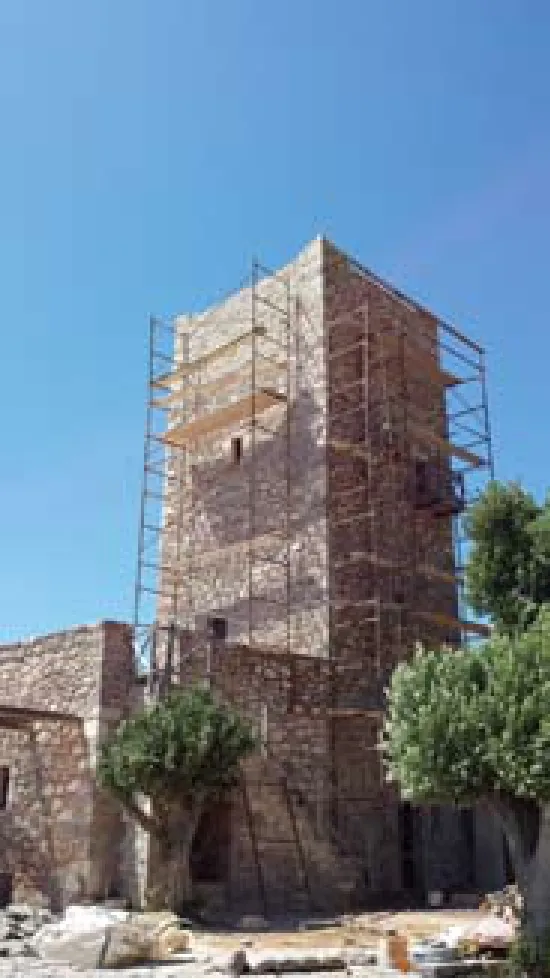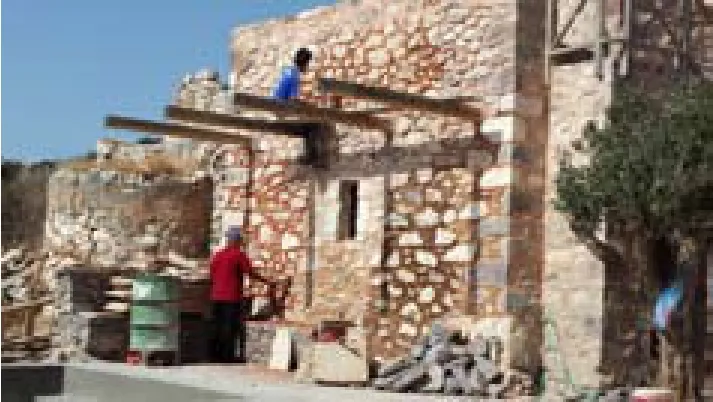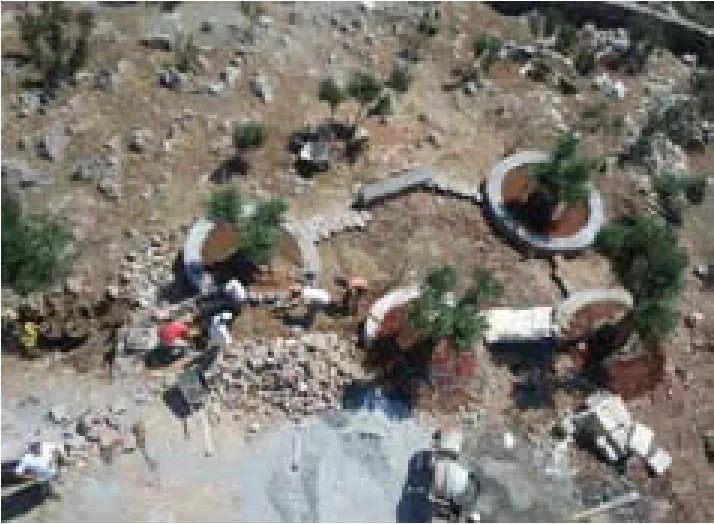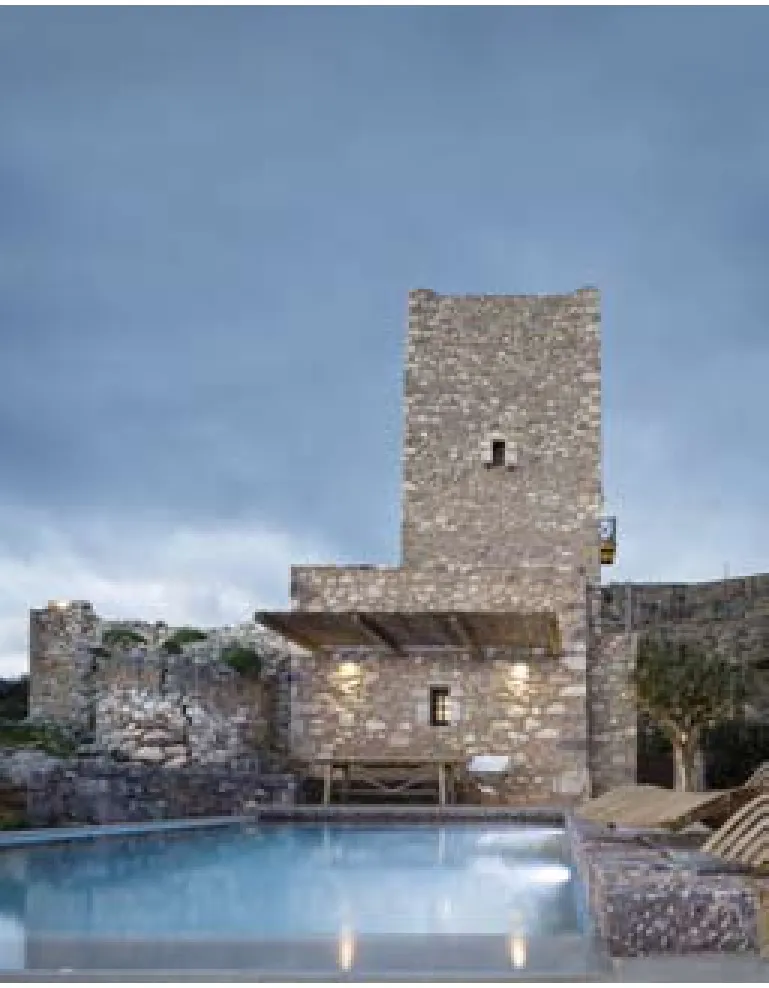泰纳龙蓝色寓所,马尼,希腊
2015-12-21建筑设计科斯塔斯佐维洛斯卡斯阿尼特奥多拉卡寇
建筑设计:科斯塔斯·佐维洛斯,卡斯阿尼·特奥多拉卡寇
Architects : Kostas Zouvelos, Kassiani Theodorakakou
泰纳龙蓝色寓所,马尼,希腊
Tainaron Blue Retreat, Mani, Greece, 2014
建筑设计:科斯塔斯·佐维洛斯,卡斯阿尼·特奥多拉卡寇
Architects : Kostas Zouvelos, Kassiani Theodorakakou
高耸的棱形塔楼威严壮丽,体现了马尼地区建筑最原始而纯粹的特色。这种被称为“xemonia”的建筑通常设于人口聚集区的外围,用以保卫和扩张领地——高塔在起到监控、发现或驱逐敌人作用的同时,也将来自聚集区的行政震慑力传递到新的领地中去。
泰纳龙蓝色寓所正是典型的这种希腊南部传统xemonia建筑。塔楼的部分现在被改建成了一座小旅舍,它的对面是一座过去也曾是坚固防御设施的类似建筑物。两座建筑一起凌驾于通往泰纳龙的道路之上。其中塔楼建造在被称为“rizomies”的坚硬岩石上,占据了战略要地,为同时俯瞰海面和腹地提供了绝佳的视点。
这一传统建筑的修复工作解决了从外观上体现古老石材材质的问题,让整修后的塔楼给人以从基地的地面生长出来的印象。建筑内外的抹面都使用了真正的罗马式砂浆“kourasani”(Theraic地区的泥土、陶瓷粉、石灰和一种特殊颜色的河沙的混合物)以及极少量的水泥,这种面层能够加强砖石的稳定性和耐久度。
而要将一座高塔转变为客房也需要克服大量的困难。其中最主要的难点在于需要让设计在高度体现当地建筑特色的同时,也创造出能满足当代审美情趣的居住用房。建筑共有4层,每层的室内面积都非常有限,新设计将其改为了3套带浴室并能共享厨房的客房,以及一个公共的用于接待和吃早餐的空间。各空间之间通过垂直交通联系,让宾客们能体验在狭窄的出入口(“瀑布”)、木楼梯或是墙上和拱门上伸出的石头台阶(踏步)间穿梭的独特感受。
为了尽量减少对建筑外部空间的干扰,场地环境的设计遵从了周边原有的景观地形,并增加了一片水面,形成建筑与场地间均衡而统一的组合,从而兼具整体感和特色。□(司马蕾 译)
项目信息/Credits and Data
场地面积/Site Area: 1103m2
建筑面积/Floor Area: 191m2
材料/Materials: 石头,木材,铁/Stone, wood, iron
造价/Cost: € 500,000
设计时间/Design Period: 2008 -2010
摄影/Photos: George Meitner

1 远景/Distant view
The towers, imposing like tall and narrow prisms, are the most stubborn and absolute expression of Mani architecture. On the outskirts of the settlements, the "xemonia" (fortified houses) were erected in order to defend or expand the land property. They served not only to control, exclude or drive out the opponents, but also to transfer the pressure from the main settlement to new territories.
Tainaron Blue Retreat is a representative example of traditional xemonia of the South. The tower – now transformed into a small guest house –faces toward a similar structure, which had also been a strong fortified complex. Together, they controlled the road to the area around Tainaron. The military tower is built on solid ground and rocks known as "rizomies", at a strategic spot that offers an amazing view of the sea and the hinterland.
The restoration of the traditional building solved form issues in relation to the old texture of the masonry, so that the final look of the tower gives the impression of a building that emerges from the rock, upon which it is founded. Both interior and exterior grouting were done with real "kourasani" or Roman mortar (a combination of Theraic soil, ceramic powder, lime and a special shade of river sand) and minimum amount of cement, which enhances the static performance of the masonry and ensures durability.
The conversion of the tower into a guest house had to overcome considerable difficulties, which involved the need for a high degree of adaptation to the specific characteristics of the regional architecture, and at the same time the demand for accommodation with modern aesthetic sense. The four floors, with relatively limited interior spaces comprising three en-suite bedrooms, a shared kitchen and a breakfast and reception area, are organized along a vertical axis, allowing guests to have the unique experience of moving through narrow openings ("waterfalls"), wooden stairs or rocks protruding from the walls and arches ("steps").
As the formation of the exterior spaces had to ensure minimum interference, a water surface area was added to adapt to the specific environment and the topography of the landscape, thus resulting in a consistent set of buildings and spaces with intensity and character.□



2-4 改造中/Under construction

5 平面/Floor 0 plan


6.7 外景/Exterior view

8 剖面/Sections

9 外景/Exterior view

10 新建泳池/Swimming pool
评论
李华:泰纳龙蓝色寓所是座迷人的酒店,古朴、粗粝的包裹,现代、简洁的室内,有品位、有情调,加之历史的叙事与周围的环境,毫无疑问会受到众多旅游者的喜爱。从建筑评论的角度看,最有意思的问题是评论的出发点是什么:是从保护的角度看,还是从设计的角度看?就目前手上的资料,我更倾向于将它看成是一个有着特殊限定条件的设计,也因此,其核心问题是,除却历史建筑保护利用中普遍性的方法与手法高低的判断,其特别之处在哪里?或者说,其特定的条件在多大程度上构筑了这座建筑的特色,既在理念上,也在物质层面和体验上?
Comments
LI Hua: Tainaron Blue Retreat is a charming hotel, with a rough and primitive exterior as well as a modern and simple interior. Historical narratives and the surrounding environment add to its unique taste and charm, which will no doubt become popular among tourists. With regards to an architectural review, I should first ask what is the purpose of a professional evaluation: should the building be reviewed from a perspective of protection or design? Based on the resources that I have available, I tend to view the design as a response to several unique constraints. Consequently, the core question becomes, what makes this building special, besides its standard method, its technical approach to the conservation of historic resources, and its utilization? Or, to what extent does the building's unique constrained conditions shape its features, in terms of concept as well as its spatial qualities and experience?
褚冬竹:封闭与辽阔、高耸与水平、粗糙与光洁、历史与当下、暖黄与蔚蓝……这个项目蕴含了太多的对比和反差,让一座古旧朴拙的瞭望塔成功转型为现代酒店。建筑师在建筑外观和环境改造上极度克制,除了最基本的增添,几乎原貌保留。3套客房被巧妙地“收纳”进了这个并非以“舒适”为初衷的狭小空间中。试想,躲在原本监控敌情的窄小窗洞背后享受无边美景,那是一种怎样的反差和奇妙的感受!旧建筑改造得以成功的原因,就是读懂了那颗被改造的“心”。这个设计做到了。
CHU Dongzhu: Closed but wide, vertical but horizontal, rough but clean, historical but contemporary, warm yellows and clear blues…This project, in which an ancient and primitive watchtower has been successfully transformed into a modern hotel, contains many contrasting elements and contradictions. The architect has exercised extreme restraint on the building and its environment, in order to conserve most of the original forms and conduct only the most basic modifications. Three suites are "collected" into a narrow space that was not originally designed for the purposes of "comfort". Imagine this contrast, and the wonderful feeling one would have while viewing the beautiful scenery from the small window, originally designed for surveillance of an enemy. A perfect rehabilitation of an old building can be realized when the architect totally understands the "heart" of the building in question. In this sense, this design has achieved that level of understanding.

11.12 内景/Interior view
